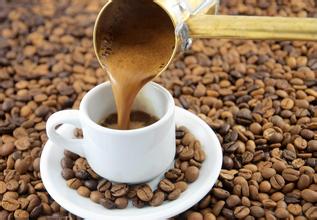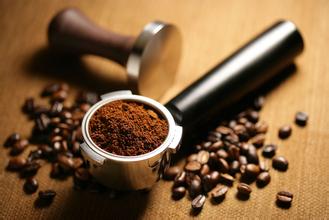Espresso extraction standard time double espresso extraction time
The most standard time of coffee extraction-double Italian concentrated extraction time
The soluble ingredients in coffee will all have different solubility (this may sound strange, but follow my way of thinking). Salts, sugars, acids, phenols, fats and lipids all take different times to dissolve into water. Some begin to dissolve as soon as the water comes into contact with coffee powder, while others may have to wait a little longer. We need to take these situations into account when brewing coffee, because changing the contact time between water and coffee will affect the amount of soluble matter that is dissolved. The easiest and first parts of coffee to be dissolved are fruit acids and organic salts (which bring light and bright fruit flavors); this is followed by light aromatic substances produced by the Mena reaction and caramel reactions (flavors such as nuts, caramel, vanilla, chocolate, butter, etc.); and finally, heavy organic matter (bringing wood, ash, malt, tobacco, etc.).
Espresso extraction time: the most common mistake is that espresso extraction time is too short, because most coffee lovers who are reading this article are not very receptive to gray or bitter taste. Unfortunately, too short extraction time for espresso is likely to sacrifice sweetness. Coffee, as always, always asks us to make compromises.
Extraction area (Surface Area)
Increasing the contact area between coffee and water makes it easier for water to extract flavor substances. When you grind the coffee into powder, the surface area of the coffee increases exponentially.
You can think of coffee beans as a cube with a side length of 1cm, with six faces, each with an area of 1cm2, so the surface area of this cube is 6cm2.
The soluble ingredients in coffee all have different solubility. Salts, sugars, acids, phenols, fats and lipids all take different time to dissolve in water. Some begin to dissolve as soon as the water comes into contact with coffee powder, while others may have to wait a little longer. We need to take these situations into account when brewing coffee, because changing the contact time between water and coffee will affect the amount of soluble matter that is dissolved. The easiest and first parts of coffee to be dissolved are fruit acids and organic salts (which bring light and bright fruit flavors). This is followed by light aromatic substances produced by the Mena reaction and caramel reaction (flavors such as nuts, caramel, vanilla, chocolate, butter, etc.); finally, heavy organic matter (bringing wood, ash, malt, tobacco, etc.)

Important Notice :
前街咖啡 FrontStreet Coffee has moved to new addredd:
FrontStreet Coffee Address: 315,Donghua East Road,GuangZhou
Tel:020 38364473
- Prev

How to play the foam of coffee flower? how to make the foam of coffee flower?
How to make Espresso Coffee Machine: all the espresso machines on the market have steam pipes for making foam. Some manufacturers decide to put turbo nozzel on their steam pipes to help their customers. If you have this kind of thing on your coffee machine, please take it off as much as possible, because this kind of thing
- Next

Coffee extraction time standard-coffee extraction golden rule 30 ml coffee extraction time
Coffee extraction time-coffee extraction golden rule 30 ml coffee extraction time The soluble ingredients in coffee all have different solubility (this may sound strange, but let me start with this idea). Salts, sugars, acids, phenols, fats and lipids all take different amounts of time to dissolve in water, and some dissolve instantaneously in contact with coffee powder.
Related
- What is the meaning of lactic acid fermentation with coffee bean treatment?
- How to judge the state of foam by sound?
- How does the latte pull out the unicorn pattern? Come to get for a little trick to improve the flower pull!
- Will flower pulling affect the taste of the latte?
- Do you know the history of coffee?
- The difference between honey treatment and sun washing what is raisin honey treatment?
- What kind of milk can a novice use to make coffee foam to keep the foam longer? The correct method and skills of milking tutorial sharing
- Why do washed coffee beans taste sour? Flavor characteristics of washed Coffee
- Introduction to the skill of how to practice the size and height of water injection around the circle of hand-brewed coffee
- How do beginners practice coffee flower drawing from scratch?

